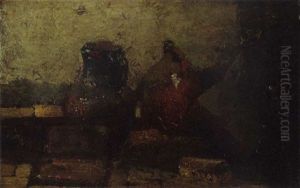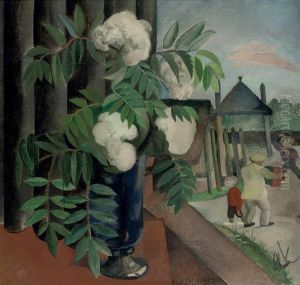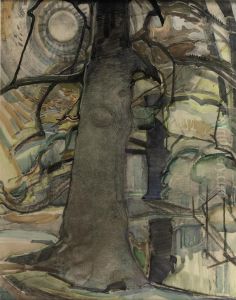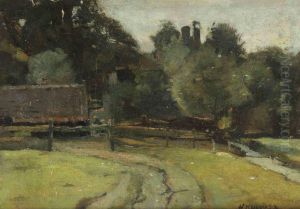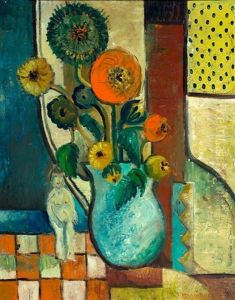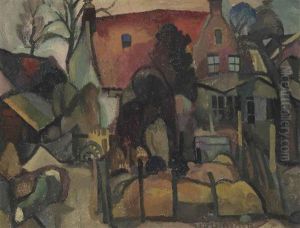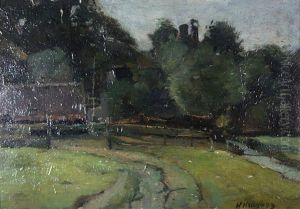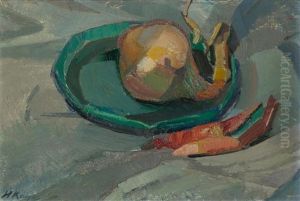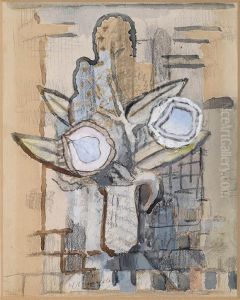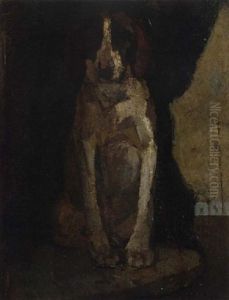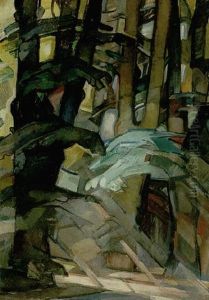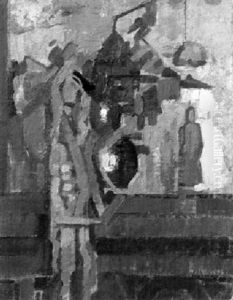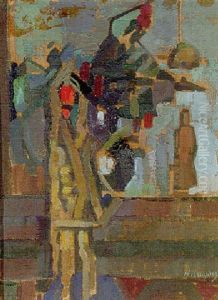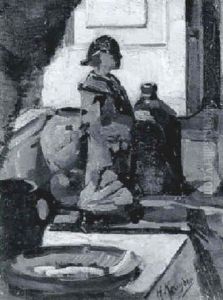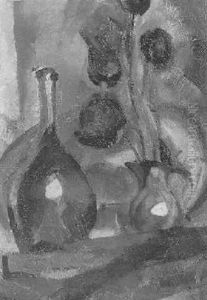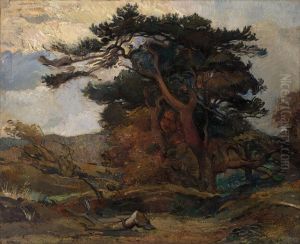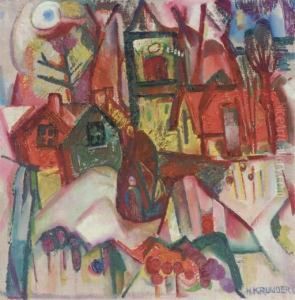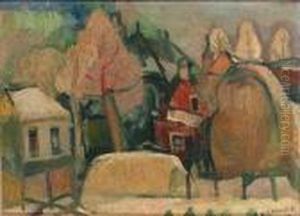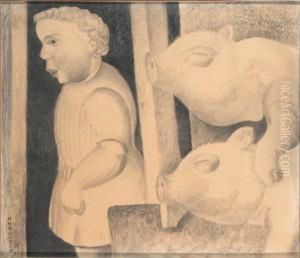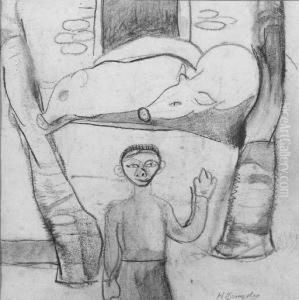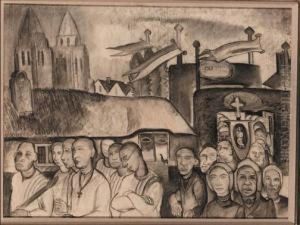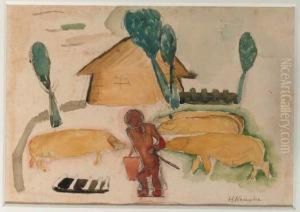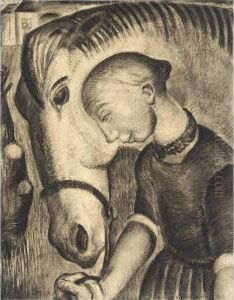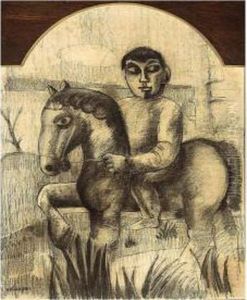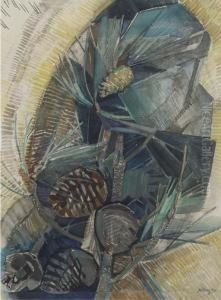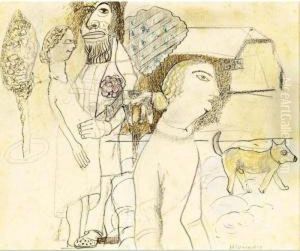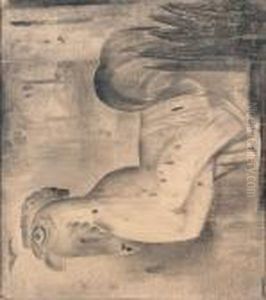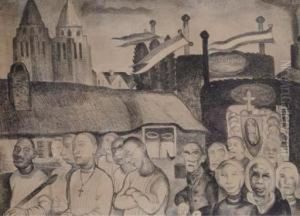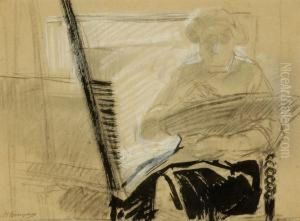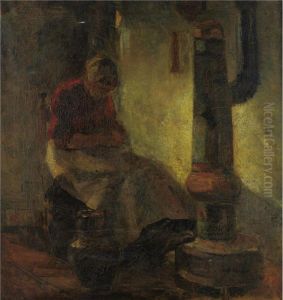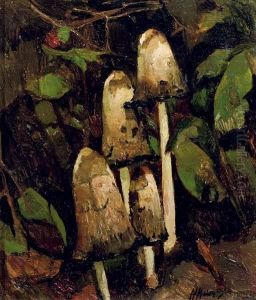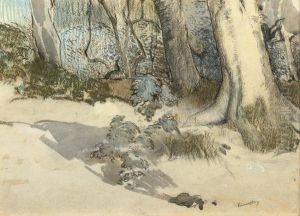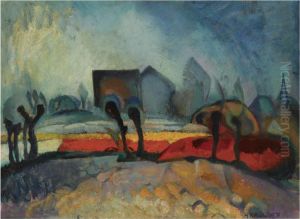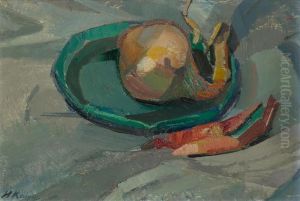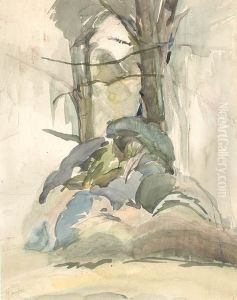Herman Kruyder Paintings
Herman Kruyder was a Dutch painter and draftsman, born on May 3, 1881, in Baarn, Netherlands. His work is often associated with Expressionism, a movement that emphasizes the expression of emotional experience rather than physical reality. Kruyder began his artistic journey at the age of 19 when he enrolled at the National Academy of Fine Arts in Amsterdam, where he studied under various teachers, including Carel Dake and August Allebé.
Kruyder's early works were influenced by the Amsterdam Impressionists, a group of artists focused on depicting the everyday life of the city with a loose, impressionistic technique. However, as his style evolved, he began to adopt a more expressionistic approach, characterized by bold colors and dynamic forms. His paintings often depicted rural life, animals, and religious themes, reflecting his personal struggles and psychological state.
Throughout his career, Kruyder struggled with mental health issues, which became more pronounced as time went on. These struggles deeply influenced his art, infusing it with a sense of emotional turmoil and intensity. Despite his challenges, he was able to produce a substantial body of work, including paintings, watercolors, and drawings.
Herman Kruyder's work was not widely recognized during his lifetime, and he lived a life marked by financial difficulties and periods of hospitalization for mental illness. He spent the latter part of his life in psychiatric institutions, where he continued to paint until his abilities declined. Kruyder passed away on June 5, 1935, in Laren, Netherlands.
Posthumously, Kruyder's work gained recognition, and he is now considered an important figure in Dutch art history. His paintings are featured in various museums and private collections, and his contribution to the Expressionist movement continues to be celebrated for its emotional depth and unique stylistic approach.
